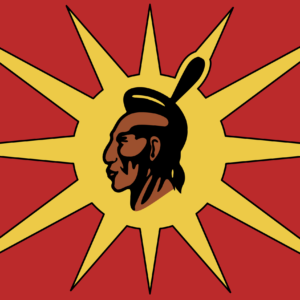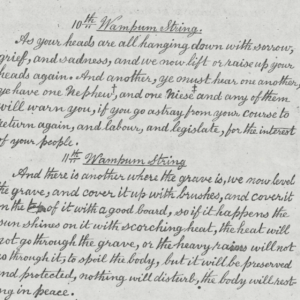We have seen many instances in which someone has been given the opportunity to act graciously and with dignity only to rebuff the courtesy with open irreverence. An example of such disrespect can be seen in the manner in which Canada has dealt with Onkwehon:we people. We need only to look at Harper’s treatment of the Native Aboriginal Health Organization (NAHO). In April of 2012, the government of Stephen Harper dropped this bombshell in relation to a posting on the NAHO website: “NAHO funding has been cut by Health Canada. It is with sadness that NAHO will wind down operations by June 30, 2012. When governments make a decision that is stupid, embarrassing, overly partisan, or risks causing an outcry, they tend to do so late in the day and late in the week, preferably on the eve of a holiday long weekend, when citizens – and journalists-aren’t paying much attention.”
So what was the Native Aboriginal Health Organization? NAHO was founded in 2000 as an overseer of research and outreach programs in such fields as suicide prevention, tobacco cessation, housing and midwifery. The Organization also collected a series of audio and video interviews with elders recounting traditional tales and knowledge. The Journal of Aboriginal Health was a magazine published by this group and was home to one of the best collections of aboriginal health research in the world. NAHO also recognized the political and policy differences prevalent within aboriginal communities and managed to bring them together, in many instances to sit at one table, with a common purpose. The purpose being the improvement of the health of the unhealthiest, most disenfranchised people in the country. Difficult and at times trying, but the NAHO managed to accomplish this feat in many communities. This asset is being destroyed for what purpose?
We believe the answer to this question lays in Harper’s Manifesto: Erasing Canada’s Indigenous communities. Policy concerning the welfare of Canada’s Aboriginal peoples was put in place to achieve two main goals: acquire Indigenous lands and resources and reduce financial responsibility to Indigenous peoples. To quote Dr. Pam Palmater, professor at Ryerson University, “The primary way in which these two objectives were to be achieved was through the physical, legal, social and spiritual elimination of Indigenous peoples.” Support for Palmater’s statement is evidenced in the information brought forth in a The Globe and Mail article by Andre Picard:
Life expectancy: Aboriginals can expect to live, on average, a decade less than other Canadians;
Disability: Native people have higher rates of disability and live, on average, about 12 more years with a disability;
Infant mortality: Aboriginal children die at three times the rate of non-aboriginal kids, and are more likely to be born with severe birth defects and debilitating conditions such as fetal alcohol syndrome;
Injuries: Members of First Nations and Inuit communities suffer traumatic injuries at four times the rate of the general population;
Suicide: The rate is six times higher;
Chronic disease: Natives have three times the rate of diabetes; suffer more heart disease and at a younger age;
Infectious disease: Tuberculosis rates are 16 times higher in first nations than in the rest of Canada; HIV-AIDS rates are growing fastest in the native population; medieval water-borne illnesses like dysentery and shigellosis are still commonplace in native communities;
The unemployment and poverty rates are five times those in the non-aboriginal community;
Education: Only 4 percent of natives have a university education, one-quarter the rate in mainstream society. One-third of aboriginal people do not graduate high school, three times the rate for non-aboriginals.
Housing: More than one-third of First Nations people have, in government jargon, a “core housing need,” meaning their homes do not meet the most basic standard of acceptability;
Infrastructure: Overcrowded houses, lack of running water and inadequate sewage are the norm in many native communities;
Environment: The contaminants that stalk some communities are frightening: Mercury, PCB’S, toxaphene, and pesticide levels are all higher in the bodies of aboriginals than non-aboriginals;
The mission statement of NAHO was, “the advancement and promotion of health and well-being of all First Nations, Inuit and Metis individuals, families and communities.” Well, we think there is a huge disparity between that mission statement and the actual reality of the conditions under which Aboriginal peoples are living. Harper can afford to spend $25 billion on fighter jet contracts (and the number is rising) but he can’t afford the paltry sum of $4.9 million on the health and wellbeing of the First Peoples of this continent. So let’s sum this up.
Harper ‘historically’, apologizes to the Aboriginal people for the institution of Residential Schools which forcibly separated children from their families and knowingly created conditions that led to the mass deaths of the indigenous children who attended. Figures show that upwards of 40% never made it out alive. “But this alone does not justify a change in the policy of this Department, which is geared towards the final solution of our Indian problem.”(SI Indian Affairs, Duncan Campbell Scott) Is this dignity? Harper then offers residential school survivors a one-time compensation of $2,000 pendant on documentation. Seriously?
But let’s add something positive to this dismal picture, even though the reach is focused to the West. The University of British Columbia has approved a Centre for Excellence in Indigenous Health. The new Centre is set to open in January of 2014 and replaces the Institute for Aboriginal Health, which sadly lacked funding in recent years. The goal of the Centre is to preserve programs from the former institute as well as creating an intersection for aboriginal health programs across a wider range of health disciplines. We believe this to be a positive step that hopefully can expand across the nation to other communities, universities and be of assistance to the Aboriginal population.
When we, Onkwehon:we, bring out our silver covenant chain and polish it we are reminding the Queen and her subsidiaries (Canada) of our policy of peace, friendship and respect. All of our treaties and policies are established with the purpose of keeping the peace and being mindful of respecting the other’s differences. We have sat down at the table with Harper’s representatives and been openly disrespected when we have shown nothing but kindness and reverence. To the point of our explaining from our viewpoint the course that discussion must take to be met with a rolling of the eyes. We are not in a schoolyard. We are talking about people’s lives, our lives. We need to be treated with Dignity.







Comments are closed.